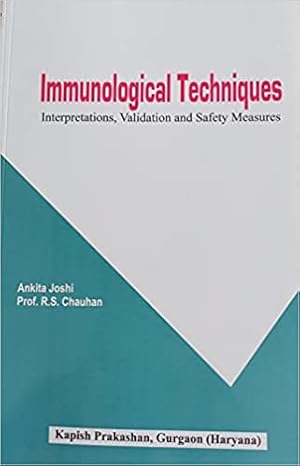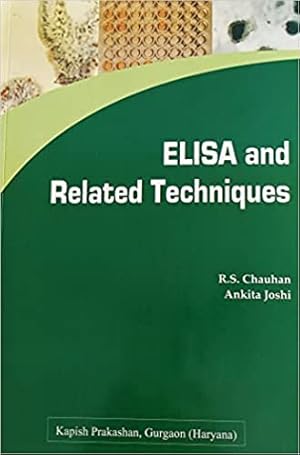ankita joshi chauhan (3 Ergebnisse)
Suchfilter
Produktart
- Alle Product Types
- Bücher (3)
- Magazine & Zeitschriften (Keine weiteren Ergebnisse entsprechen dieser Verfeinerung)
- Comics (Keine weiteren Ergebnisse entsprechen dieser Verfeinerung)
- Noten (Keine weiteren Ergebnisse entsprechen dieser Verfeinerung)
- Kunst, Grafik & Poster (Keine weiteren Ergebnisse entsprechen dieser Verfeinerung)
- Fotografien (Keine weiteren Ergebnisse entsprechen dieser Verfeinerung)
- Karten (Keine weiteren Ergebnisse entsprechen dieser Verfeinerung)
- Manuskripte & Papierantiquitäten (Keine weiteren Ergebnisse entsprechen dieser Verfeinerung)
Zustand Mehr dazu
- Neu (3)
- Wie Neu, Sehr Gut oder Gut Bis Sehr Gut (Keine weiteren Ergebnisse entsprechen dieser Verfeinerung)
- Gut oder Befriedigend (Keine weiteren Ergebnisse entsprechen dieser Verfeinerung)
- Ausreichend oder Schlecht (Keine weiteren Ergebnisse entsprechen dieser Verfeinerung)
- Wie beschrieben (Keine weiteren Ergebnisse entsprechen dieser Verfeinerung)
Einband
- alle Einbände
- Hardcover (Keine weiteren Ergebnisse entsprechen dieser Verfeinerung)
- Softcover (3)
Weitere Eigenschaften
- Erstausgabe (Keine weiteren Ergebnisse entsprechen dieser Verfeinerung)
- Signiert (Keine weiteren Ergebnisse entsprechen dieser Verfeinerung)
- Schutzumschlag (Keine weiteren Ergebnisse entsprechen dieser Verfeinerung)
- Angebotsfoto (3)
Sprache (2)
Preis
- Beliebiger Preis
- Weniger als EUR 20
- EUR 20 bis EUR 45 (Keine weiteren Ergebnisse entsprechen dieser Verfeinerung)
- Mehr als EUR 45 (Keine weiteren Ergebnisse entsprechen dieser Verfeinerung)
Gratisversand
- Kostenloser Versand nach USA (Keine weiteren Ergebnisse entsprechen dieser Verfeinerung)
Land des Verkäufers
Verkäuferbewertung
-
Immunology Techniques: Interpretations, Validation and Safety Measures
Verlag: IP Innovative Publication, 2022
ISBN 10: 939120841X ISBN 13: 9789391208417
Sprache: Englisch
Anbieter: Vedams eBooks (P) Ltd, New Delhi, Indien
Soft cover. Zustand: New. Immunity is the resistance of the body expressed through various cellular, physiological and biochemical reactions in the body. Whenever any foreign material/ infection enters in the body, the immune system activates and initiates production of immunity against those particular foreign material (infection/antigen). Mainly the immunity developed in the body is either in the form of humoral or cell mediated immune response and is specific to a particular antigen against which it is developed in the body. In the process of disease diagnosis, it is important to either detect the presence of antigen in the body or antibodies or specific T cells for the confirmation of the disease. For this purpose, various immunological techniques are employed to confirm the tentative diagnosis of physician/clinician. In the present book, various immunological techniques are described, including agglutination, precipitation, CFT, ELISA, DIA and other related techniques. These techniques are described in a very simple language and written by very experienced persons including the tit-bits of each tests so that the readers can understand easily and may employ these techniques in their research. Besides, validation 01 the techniques is described along with a diagnostic, sensitivity and specificity to determine the assay performance and reliability. Measurement of uncertainty related with each diagnostic test has also been discussed in this book. The safety measurement adopted in diagnostic laboratory along with the first aid in case of accidents are being well described. Each technique is well illustrated through diagram or photographs so that the basic principle of the technique is clearly understood. Authors arc having very rich experience of working in a diagnostic laboratory not only as technical expert or as a diagnostician, but also they are having the experience of research managers and management of immunological laboratory and diagnostic laboratory.
-
Immunology for Beginners
Verlag: IP Innovative Publication, 2022
ISBN 10: 9391208258 ISBN 13: 9789391208257
Sprache: Englisch
Anbieter: Vedams eBooks (P) Ltd, New Delhi, Indien
Soft cover. Zustand: New. Immunology is the science of resistance, which protects body from intrinsic and extrinsic substances that can harm body, through a variety of biochemical, physiological, humoral and cellular reactions in the body. This an integral part of the body without which one cannot think of life. During the process of evolution, nature has provided this defence mechanism in the body of all living creatures, particularly of higher animals and man that protects them from physical, chemical and biological insults. The antigens when enters in the body of animals is trapped, processed and eliminated by several cells including macrophages, dendritic cells and B-cells. Most antigens offer multiple epitopes and therefore initiate proliferation and differentiation in majority of B-cells clones, each derivative from a B-cell that recognizes a particular epitope. The resulting serum antibodies are heterogeneous comprising of mixture of antibodies, each one specific for one epitope itself. Such a polyclonal antibody response facilitates the localization, phagocytosis and complement mediated lysis of antigen (agent). This situation is normally present in the body, but if depressed, it leads to immunodeficiency or it is exaggerated, it is known as hypersensitivity. Another situation may occur in which immunity is directed towards the body's own/self materials, then it is known as autoimmunity. This book is divided in six chapters including Basic Concepts, Immunodeficiency, Hypersensitivity, Autoimmunity, Immunomodulation and Tumour Immunology for the benefit of readers. Hope it will be very useful to the students of Immunology/Biotechnology besides, veterinarians, medicos and graduate students. It may also provide useful information to the clinicians dealing with immunopathological disorders. Authors are thankful to all those who helped in the preparation of this book.
-
ELISA and Related Techniques
Verlag: IP Innovative Publication, 2022
ISBN 10: 9391208339 ISBN 13: 9789391208332
Anbieter: Vedams eBooks (P) Ltd, New Delhi, Indien
Soft cover. Zustand: New. It is a matter of great pleasure and satisfaction to write this monograph on ELISA and Related Techniques. Enzyme linked immunosorbent assay (ELISA) is a widely applicable and accepted test routinely used now-a-days for diagnosis and confirmation of infectious diseases. It has the same principle and sensitivity as radioimmunoassay (RIA) and replaced the later being less expensive and safe in handling during procedure. In radioimmunoassays, the use of radioisotope labelled antibodies or antigen are hazardous to the health and it requires the costly gamma or beta counter to interpret the results. The basic principle of ELISA is same as RIA but in place of radioisotope labelled antibodies, in ELISA an enzyme is used. This assay is also used for the detection of antigen as well as antibodies. For detection of antibodies, the known antigen is coated on the surface of well of polystyrene plate (96 wells) and then test serum samples, properly diluted, is added. After incubation, the plates are washed and conjugate enzyme labelled species specific antibody is added which binds with the antibodies present in test serum and can be detected by adding substrate which gives a coloured reaction that can be seen by naked eyes or read in spectrophotometer. For detection of antigen, the sandwich assay is preferred. In sandwich assay, antibody is bound to the solid phase (polystyrene plate). This antibody is known as capture antibody. Then the specimen suspected for presence of antigen is added. After appropriate incubation, the plate is washed and second antibody specific to antigen is applied, which is conjugated with enzyme in direct method while in indirect method this antibody is plain and anti-antibody conjugated with enzyme is applied which is known as indicator antibody. In indirect method the secondary antibody should be raised in a different animal species with that of capture antibody. The reaction is detected by applying enzyme substrate, which gives coloured reaction. The coloured reaction can be seen by naked eyes or is read by spectrophotometer. In this monograph, various tips of ELISA procedure are mentioned so that the readers can themselves use these techniques on their own. This compilation has been prepared with the details of enzyme immunoassays including dot immnuno-assay, immunoperoxidase techniques, PAP techniques and avidin-biotin complex assays. I believe that this monograph will be helpful to the readers as a practical as well as reference book particularly for those involved in biotechnology, veterinary and for medical diagnostic laboratories, research institutions and teaching of students. We must acknowledge our colleagues and family members for their support, motivation and cooperation.




